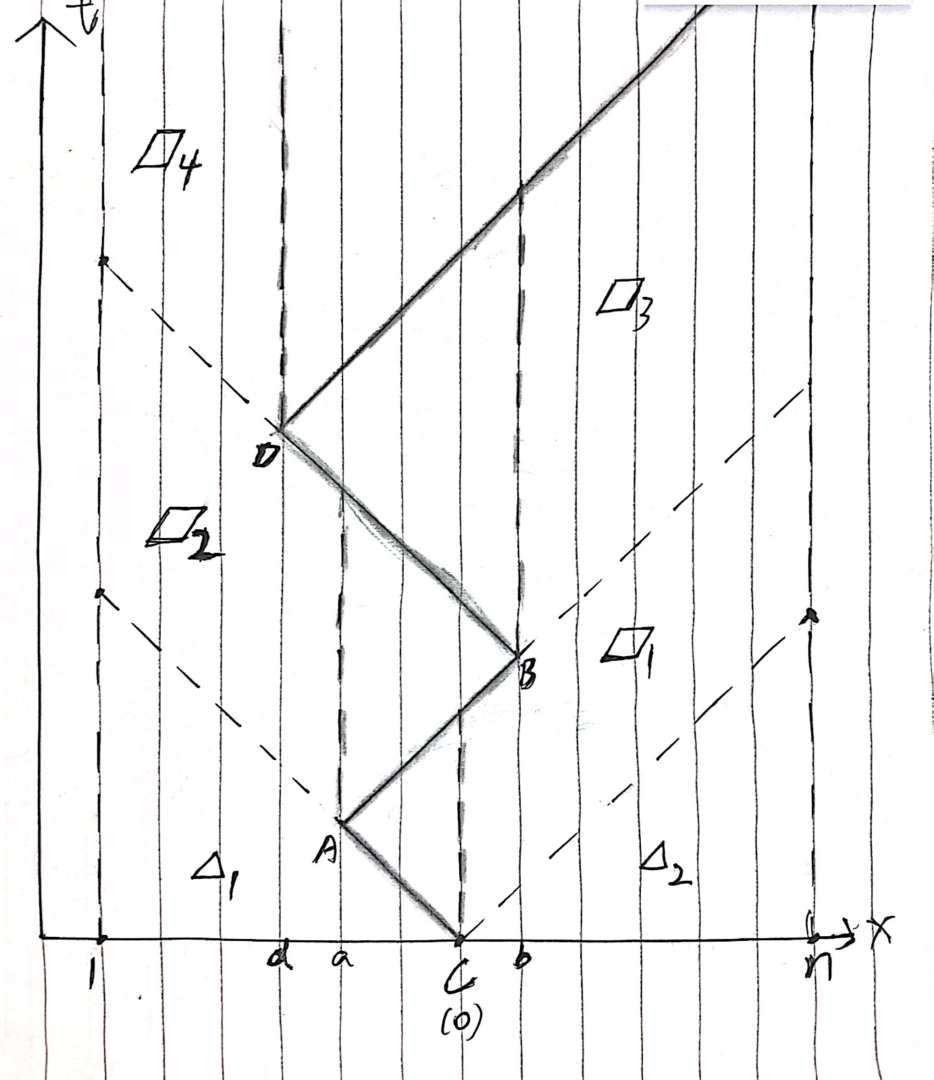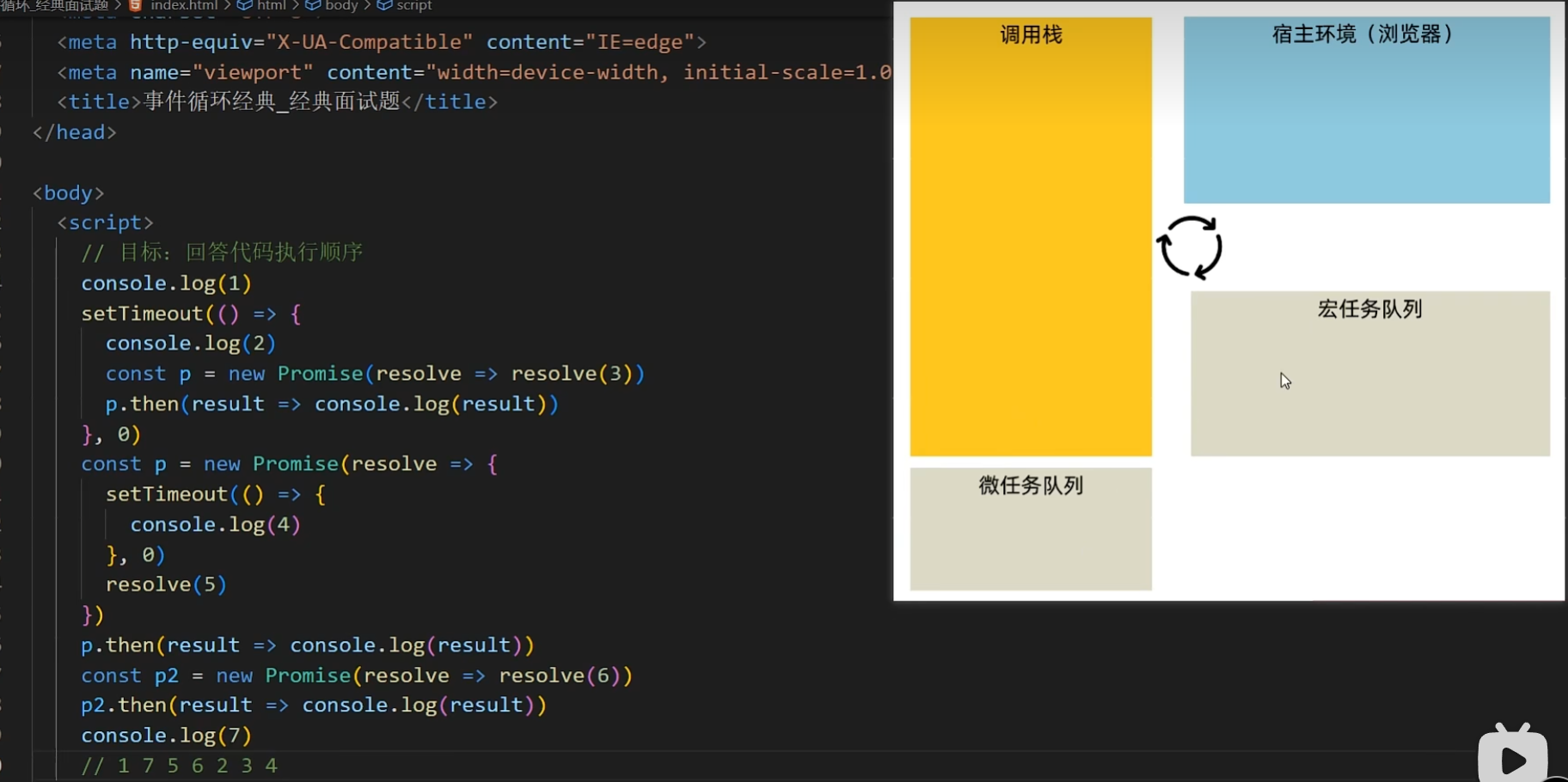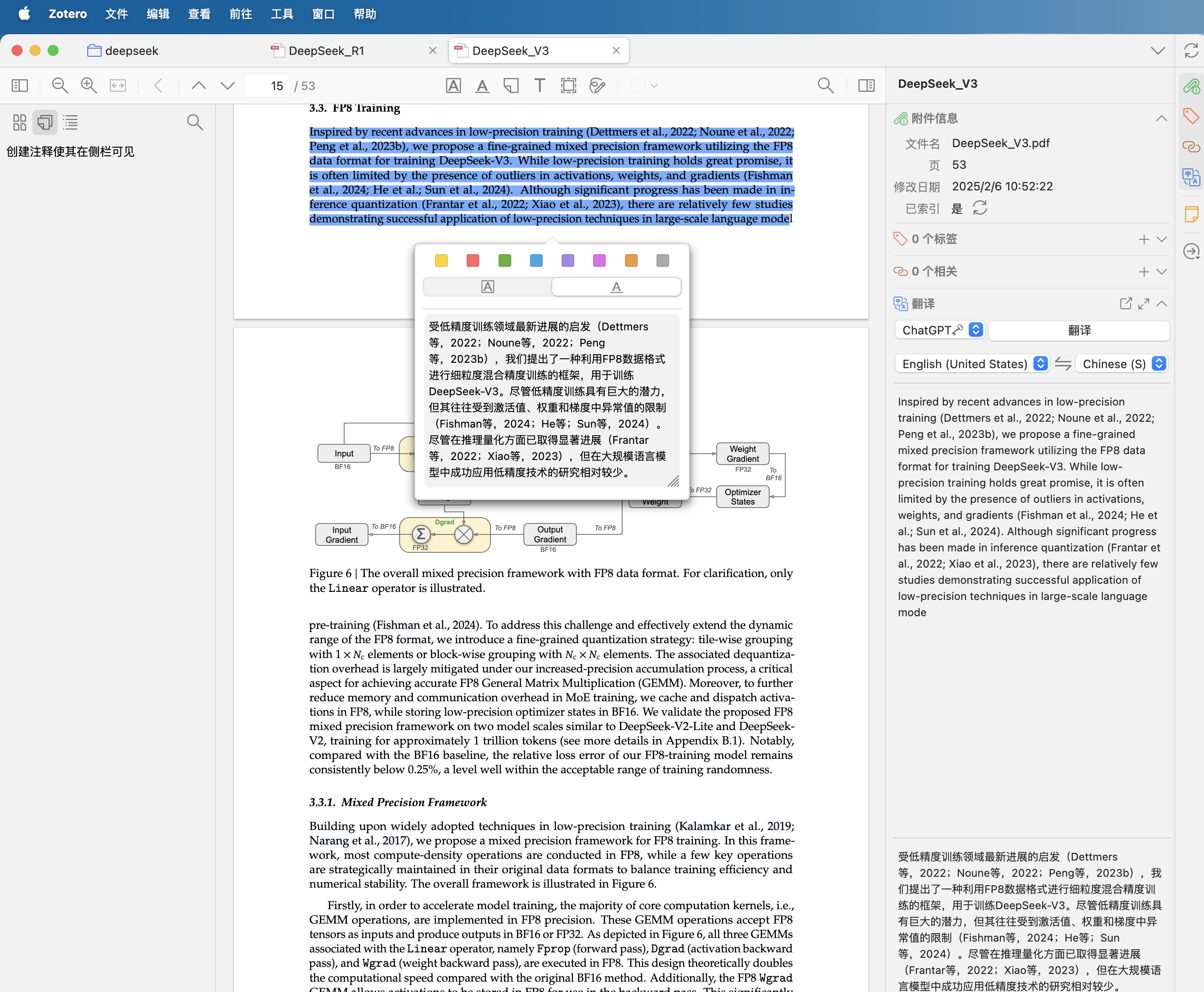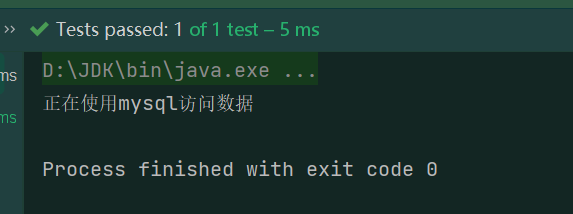上一篇: GTM148 抄书笔记 Part III.
■■■■■■■■■■■■■■■■■■■■■■■■■
Contents
- Contents
- Chapter VII. Extensions and Cohomology
- The Extension Problem
- Automorphism Groups
Chapter VII. Extensions and Cohomology
The Extension Problem
Definition 7.1.1 If \(K\) and \(Q\) are groups, then an extension of \(K\) by \(Q\) is a group \(G\) having a normal subgroup \(K_1\cong K\) with \(G/K_1\cong Q\).
Example 7.1.2
- Both \(\mathbf Z_6\) and \(\mathrm S_3\) are extensions of \(\mathbf Z_3\) by \(\mathbf Z_2\). However, \(\mathbf Z_6\) is an extension of \(\mathbf Z_2\) by \(\mathbf Z_3\), but \(\mathrm S_3\) is not such an extension.
- For any groups \(K\) and \(Q\), the direct product \(K\times Q\) is an extension of \(K\) by \(Q\) as well as an extension of \(Q\) by \(K\).
Proposition 7.1.3
- If \(K\) and \(Q\) are finite, then every extension \(G\) of \(K\) by \(Q\) has order \(|K||Q|\).
- If \(G\) has a normal series with factor groups \(Q_n,\ldots,Q_1\), then \(|G|=\prod|Q_i|\).
Proposition 7.1.4 If \((a,b)=1\) and \(K\) and \(Q\) are abelian groups of orders \(a\) and \(b\), respectively, then there is only one (to isomorphism) abelian extension of \(K\) by \(Q\).
Proposition 7.1.5 If \(p\) is prime, every nonabelian group of order \(p^3\) is an extension of \(\mathbb Z_p\) by \(\mathbb Z_p\times\mathbb Z_p\).
Automorphism Groups
Definition 7.2.1 The automorphism group of a group \(G\), denoted by \(\mathrm{Aut}(G)\), is the set of all the automorphisms of \(G\) under the operation of composition.
It is easy to check that \(\mathrm{Aut}(G)\) is a group; indeed, it is a subgroup of the symmetric group \(\mathrm S_G\).
Definition 7.2.2 An automorphism \(\varphi\) of \(G\) is inner if it is conjugation by some element of \(G\); otherwise, it is outer. Denote the set of all inner automorphisms of \(G\) by \(\mathrm{Inn}(G)\).
Theorem 7.2.3
- N/C Lemma If \(H\le G\), then \(\mathrm C_G(H)\lhd\mathrm N_G(H)\) and \(\mathrm N_G(H)/\mathrm C_G(H)\) can be imbedded in \(\mathrm Aut(H)\).
- \(\mathrm Inn(G)\lhd\mathrm Aut(G)\) and \(G/\mathrm Z(G)\cong\mathrm{Inn}(G)\).
Proof
- If \(a\in G\), let \(\gamma_a\) denote conjugation by \(a\). Define \(\varphi\!:\mathrm N_G(H)\rightarrow\mathrm{Aut}(H)\) by \(a\mapsto\gamma_a\big|_H\) (note that \(\gamma_a\big|_H\in\mathrm{Aut}(H)\) because \(a\in\mathrm N_G(H)\)); \(\varphi\) is easily seen to be a homomorphism. The following statements are equivalent: \(a\in\mathrm{ker}\varphi\); \(\gamma_a\big|_H\) is the identity on \(H\); \(aha^{-1}=h\) for all \(h\in H\); \(a\in\mathrm C_G(H)\). By the first isomorphism theorem, \(\mathrm C_G(H)\lhd\mathrm N_G(H)\) and \(\mathrm N_G(H)/\mathrm C_G(H)\cong\mathrm{im}\varphi\le\mathrm{Aut}(H)\).
- If \(H=G\), then \(\mathrm N_G(G)=G, \mathrm C_G(G)=\mathrm Z(G)\), and \(\mathrm{im}\varphi=\mathrm{Inn}(G)\). Therefore, \(G/\mathrm Z(G)\cong\mathrm{Inn}(G)\) is a special case of the isomorphism just established. To see that \(\mathrm{Inn}(G)\lhd\mathrm{Aut}(G)\), take \(\gamma_a\in\mathrm{Inn}(G)\) and \(\varphi\in\mathrm{Aut}(G)\). Then \(\varphi\gamma_a\varphi^{-1}=\gamma_{\varphi a}\in\mathrm{Inn}(G)\).
■
Definition 7.2.4 The group \(\mathrm{Aut}(G)/\mathrm{Inn}(G)\) is called the outer automorphism group of \(G\).
Example 7.2.6 Nonisomorphic groups can have isomorphic automorphism groups: \(\mathrm{Aut}(\mathbf V)\cong\mathrm S_3\cong\mathrm{Aut}(\mathrm S_3)\).
Example 7.2.7 If \(G\) is an elementary abelian group of order \(p^n\), then \(\mathrm{Aut}(G)\cong\mathrm {GL}(n,p)\). (This follows from Proposition 4.1.17: \(G\) is a vector space over \(\mathbb Z_p\) and every automorphism is a nonsingular linear transformation.)
Theorem 7.2.8 If \(G\) is a cyclic group of order \(n\), then \(\mathrm{Aut}(G)\cong\mathrm U(\mathbb Z_n)\).
Proof
Let \(G=\langle a\rangle\). If \(\varphi\in\mathrm{Aut}(G)\), then \(\varphi(a)=a^k\) for some \(k\); moreover, \(a^k\) must be a generator of \(G\), so that \((k,n)=1\), and \([k]\in\mathrm U(\mathbb Z_n)\). It is routine to show that \(\Theta\!:\mathrm{Aut}(G)\rightarrow\mathrm U(\mathbb Z_n)\), defined by \(\Theta(\varphi)=[k]\), is an isomorphism.
■
Proposition 7.2.9
- \(\mathrm{Aut}(\mathbb Z_2)=\mathbf 1\); \(\mathrm{Aut}(\mathbb Z_4)\cong\mathbb Z_2\); if \(m\ge 3\), then \(\mathrm {Aut}(\mathbb Z_{2^m})\cong\mathbb Z_2\times\mathbb Z_{2^{m-2}}\); \(\mathrm{Aut}(\mathbb Z)\cong\mathbb Z_2\).
- If \(p\) is an odd prime, then \(\mathrm{Aut}(\mathbb Z_{p^m})\cong\mathbb Z_i\), where \(l=(p-1)p^{m-1}\).
- If \(n=p_1^{e_1}\ldots p_t^{e_t}\), where the \(p_i\) are distinct primes and the \(e_i>0\), then \(\mathrm{Aut}(\mathbb Z_n)\cong\prod_i\mathrm{Aut}(\mathbb Z_{q_i})\), where \(q_i=p_i^{e_i}\).
Definition 7.2.10 A group \(G\) is complete if it is centerless and every automorphism of \(G\) is inner.
It follows that \(\mathrm {Aut}(G)\cong G\) for every complete group.
Lemma 7.2.11 An automorphism \(\varphi\) of \(\mathrm S_n\) preserves transpositions (\(\varphi(\tau)\) is a transposition whenever \(\tau\) is) if and only if \(\varphi\) is inner.
Proof
If \(\varphi\) is inner, then it preserves the cycle structure of every permutation, by Theorem 3.2.3.
We prove by induction on \(t\ge 2\), that there exist conjugations \(\gamma_2,\ldots,\gamma_t\) such that \(\gamma_t^{-1}\ldots\gamma_2^{-1}\varphi\) fixes \((1\ \ 2),\ldots,(1\ \ t)\). If \(\pi\in\mathrm S_n\), we will denote \(\varphi(\pi)\) by \(\pi^\varphi\) in this proof. By hypothesis, \((1\ \ 2)^\varphi=(i\ \ j)\) for some \(i,j\); define \(\gamma_2\) to be conjugation by \((1\ \ i)(2\ \ j)\). By Lemma 3.2.2, the quick way of computing conjugates in \(\mathrm S_n\), we see that \((1\ \ 2)^\varphi=(1\ \ 2)^{\gamma_2}\), and so \(\gamma_2^{-1}\varphi\) fixes \((1\ \ 2)\).
Let \(\gamma_2,\ldots,\gamma_t\) be given by the inductive hypothesis, so that \(\psi=\gamma_t^{-1}\ldots\gamma_2^{-1}\varphi\) fixes \((1\ \ 2),\ldots,(1\ \ t)\). Since \(\psi\) preserves transpositions, \((1\ \ t+1)^\psi=(l\ \ k)\). Now \((1\ \ 2)\) and \((l\ \ k)\) cannot be disjoint, lest \([(1\ \ 2)(1\ \ t+1)]^{\psi}=(1\ \ 2)^\psi(1\ \ t+1)^\psi=(1\ \ 2)(l\ \ k)\) have order \(2\), while \((1\ \ 2)(1\ \ t+1)\) has order \(3\). Thus, \((1\ \ t+1)^\psi=(1\ \ k)\) or \((1\ \ t+1)^\psi=(2\ \ k)\). If \(k\le t\), then \((1\ \ t+1)^\psi\in\langle(1\ \ 2),\ldots,(1\ \ t)\rangle\), and hence it is fixed by \(\psi\); this contradicts \(\psi\) being injective, for either \((1\ \ t+1)^\psi=(1\ \ k)=(1\ \ k)^\psi=(2\ \ k)=(2\ \ k)^\psi\). Hence, \(k\ge t+1\). Define \(\gamma_{t+1}\) to be conjugation by \((k\ \ t+1)\). Now \(\gamma_{t+1}\) fixes \((1\ \ 2),\ldots,(1\ \ t)\) and \((1\ \ t+1)^{\gamma_{t+1}}=(1\ \ t+1)^\psi\), so that \(\gamma_{t+1}^{-1}\cdots\gamma_2^{-1}\varphi\) fixes \((1\ \ 2),\ldots,(1\ \ t+1)\) and the induction is complete. It follows that \(\gamma_n^{-1}\cdots\gamma_{2}^{-1}\varphi\) fixes \((1\ \ 2),\ldots,(1\ \ n)\). But these transpositions generate \(\mathrm S_n\), by Proposition 2.1.20, and so \(\gamma_n^{-1}\ldots\gamma_2^{-1}\varphi\) is the identity. Therefore, \(\varphi=\gamma_2\cdots\gamma_n\in\mathrm{Inn}(\mathrm S_n)\).
■
Theorem 7.2.12 If \(n\neq 2\) or \(n\neq 6\), then \(\mathrm S_n\) is complete.
Proof
Let \(T_k\) denote the conjugacy class in \(\mathrm S_n\) consisting of all products of \(k\) disjoint transpositions. By Proposition 1.3.4, a permutation in \(\mathrm S_n\) is an involultion if and only if it lies in some \(T_k\). It follows that if \(\theta\in\mathrm{Aut}(\mathrm S_n)\), then \(\theta(T_1)=T_k\) for some \(k\). We shall show that if \(n\neq 6\), then \(|T_k|\neq|T_1|\) for \(k\neq 1\). Assuming this, then \(\theta(T_1)=T_1\), and Lemma 7.2.11 completes the proof since \(\mathrm S_{n}\) is centerless for \(n\ge 3\) by Proposition 3.1.19.
Now \(|T_1|=n(n-1)/2\). To count \(T_k\), observe first that there are
\[\frac 12n(n-1)\times \frac 12(n-2)(n-3)\times\cdots\times\frac 12(n-2k+2)(n-2k+1) \]\(k\)-tuples of disjoint transpositions. Since disjoint transpositions commute and there are \(k!\) orderings obtained from any \(k\)-tuple, we have
\[|T_k|=n(n-1)(n-2)\cdots(n-2k+1)/k!2^k. \]The question whether \(|T_1|=|T_k|\) leads to the question whether there is some \(k>1\) such that
\[\begin{align} (n-2)(n-3)\cdots(n-2k+1)=k!2^{k-1}. \end{align} \]Since the right side of \((1)\) is positive, we must have \(n\ge 2k\). Therefore, for fixed \(n\),
\[\text{left side}\ge(2k-2)(2k-3)\cdots(2k-2k+1)=(2k-2)!. \]An easy induction shows that if \(k\ge 4\), then \((2k-2)!>k!2^{k-1}\), and so \((1)\) can hold only if \(k=2\) or \(k=3\). When \(k=2\), the right side is \(4\), and it is easy to see that equality never holds; we may assume, therefore, that \(k=3\). Since \(n\ge 2k\), we must have \(n\ge 6\). If \(n> 6\), then the left side of \((1)\ge 5\times 4\times 3\times 2=120\), while the right side is \(24\). We have shown that if \(n\neq 6\), then \(|T_1|\neq|T_k|\) for all \(k>1\), as desired.
■
Corollary 7.2.13 If \(\theta\) is an outer automorphism of \(\mathrm S_6\), and if \(\tau\in\mathrm S_6\) is a transposition, then \(\theta(\tau)\) is a product of three disjoint transpositions.
Corollary 7.2.14 If \(n\neq 2\) or \(n\neq 6\), then \(\mathrm{Aut}(\mathrm S_n)\cong \mathrm S_n\).
Lemma 7.2.15 There exists a transitive subgroup \(K\le\mathrm S_6\) of order \(120\) which contains no transpositions.
Proof
If \(\sigma\) is a \(5\)-cycle, then \(P=\langle\sigma\rangle\) is a Sylow \(5\)-subgroup of \(\mathrm S_5\). The Sylow theorem says that if \(r\) is the number of conjugates of \(P\), then \(r\equiv 1\pmod 5\) and \(r\) is a divisor of \(120\); it follows easily that \(r=6\). The representation of \(\mathrm S_5\) on \(X\), the set of all left cosets of \(N=\mathrm N_{\mathrm S_5}(P)\), is a homomorphism \(\rho\!:\mathrm S_5\rightarrow\mathrm S_X\cong\mathrm S_6\). Now \(X\) is a transitive \(\mathrm S_5\)-set, by Proposition 4.2.13, and so \(|\mathrm{ker}\rho|\le|\mathrm S_5|/r=|\mathrm S_5|/6=20\), by Proposition 3.5.13(iii). Since the only normal subgroups of \(\mathrm S_5\) are \(\mathrm S_5,\mathrm A_5\), and \(\mathbf 1\), it follows that \(\mathrm{ker}\rho=\mathbf 1\) and \(\rho\) is an injection. Therefore, \(\mathrm{im}\rho\cong\mathrm S_5\) is a transtive subgroup of \(\mathrm S_X\) of order \(120\).
For notational convenience, let us write \(K\le\mathrm S_6\) instead of \(\mathrm{im}\rho\le\mathrm S_X\). Now \(K\) contains an element \(\alpha\) of order \(5\) which must be a \(5\)-cycle; say, \(\alpha=(1\ \ 2\ \ 3\ \ 4\ \ 5)\). If \(K\) contains a transposition \((i\ \ j)\), then transitivity of \(K\) provides \(\beta\in K\) with \(\beta(j)=6\), and so \(\beta(i\ \ j)\beta^{-1}=(\beta i\ \ \beta j)=(l\ \ 6)\) for some \(l\neq 6\) (of course, \(l=\beta i\)). Conjugating \((l\ \ 6)\in K\) by the powers of \(\alpha\) shows that \(K\) contains \((1\ \ 6), (2\ \ 6), (3\ \ 6), (4\ \ 6)\), and \((5\ \ 6)\). But these transpositions generate \(\mathrm S_6\), and this contradicts \(K(\cong\mathrm S_5)\) being a proper subgroup of \(\mathrm S_6\).
■
Theorem 7.2.16
- There exists an outer automorphism of \(\mathrm S_6\).
- \(\mathrm{Aut}(\mathrm S_6)/\mathrm{Inn}(\mathrm S_6)\cong\mathbb Z_2\), and so \(|\mathrm{Aut}(\mathrm S_6)|=1440\).
Proof
- Let \(K\) be a transitive subgroup of \(\mathrm S_6\) of order \(120\), and let \(Y\) be the family of its left cosets: \(Y=\{\alpha_1K,\ldots,\alpha_6K\}\). If \(\theta\!:\mathrm S_6\rightarrow\mathrm S_Y\) is the representation of \(\mathrm S_6\) on the left cosets of \(K\), then \(\mathrm{ker}\theta\le K\) is a normal subgroup of \(\mathrm S_6\). But \(\mathrm A_6\) is the only proper normal subgroup of \(\mathrm S_6\), so that \(\mathrm{ker}\theta=\mathbf 1\) and \(\theta\) is an injection. Since \(\mathrm S_6\) is finite, \(\theta\) must be a bijection, and so \(\theta\in\mathrm{Aut}(\mathrm S_6)\), for \(\mathrm S_Y\cong\mathrm S_6\). Were \(\theta\) inner, then it would preserve the cycle structure of every permutation in \(\mathrm S_6\). In particular, \(\theta_{(1\ \ 2)}\), defined by \(\theta_{(1\ \ 2)}\!:\alpha_iK\mapsto(1\ \ 2)\alpha_iK\) for all \(i\), is a transposition, and hence \(\theta\) fixes \(\alpha_iK\) for four different \(i\). But if \(\theta_{(1\ \ 2)}\) fixes even one left coset, say \(\alpha_iK=(1\ \ 2)\alpha_iK\), then \(\alpha_i^{-1}(1\ \ 2)\alpha_i\) is a transposition in \(K\). This contradiction shows that \(\theta\) is an outer automorphism.
- Let \(T_1\) be the class of all transpositions in \(\mathrm S_6\), and let \(T_3\) be the class of all products of \(3\) disjoint transpositions. If \(\theta\) and \(\psi\) are outer automorphisms of \(\mathrm S_6\), then both interchange \(T_1\) and \(T_3\), by Corollary 7.2.13, and so \(\theta^{-1}\psi(T_1)=T_1\). Therefore, \(\theta^{-1}\psi\in\mathrm{Inn}(\mathrm S_6)\), by Lemma 7.2.11, and \(\mathrm{Aut}(S_6)/\mathrm{Inn}(\mathrm S_6)\) has order \(2\).
■
Definition 7.2.17 A syntheme is a product of \(3\) disjoint transpositions. A pentad is a family of \(5\) synthemes, no two of which have a common transposition.
Proposition 7.2.18 \(\mathrm S_6\) contains exactly \(6\) pentads. They are:
Theorem 7.2.19 If \(\{\sigma_2,\ldots,\sigma_6\}\) is a pentad in some ordering, then there is a unique outer automorphism \(\theta\) of \(\mathrm S_6\) with \(\theta\!:(1\ \ i)\mapsto\sigma_i\) for \(i=2,3,4,5,6\). Moreover, every outer automorphism of \(\mathrm S_6\) has this form.
Proof
Let \(X=\{(1\ \ 2),(1\ \ 3),(1\ \ 4),(1\ \ 5),(1\ \ 6)\}\). If \(\theta\) is an outer automorphism of \(\mathrm S_6\), then Corollary 7.2.13 shows that each \(\theta((1\ \ i))\) is a syntheme. Since \((1\ \ i)\) and \((1\ \ j)\) do not commute for \(i\neq j\), it follows that \(\theta((1\ \ i))\) and \(\theta((1\ \ j))\) do not commute; hence, \(\theta(X)\) is a pentad. Let us count the number of possible functions from \(X\) to pentads arising from outer automorphisms. Given an outer automorphism \(\theta\), there are \(6\) choices of pentad for \(\theta(X)\); given such a pentad \(P\), there are \(5!=120\) bijections \(X\rightarrow P\). Hence, there are at most \(720\) bijections from \(X\) to pentads which can possibly arise as restrictions of outer automorphisms. But there are exactly \(720\) outer automorphisms, by Theorem 7.2.16, and no two of them can restrict to the same bijection because \(X\) generates \(\mathrm S_6\). The statements of the theorem follow.
■
Corollary 7.2.20 There is an outer automorphism of \(\mathrm S_6\) which has order \(2\).
Proposition 7.2.21 If \(G\) is a finite nonabelian \(p\)-group, then \(p^2\big||\mathrm{Aut}(G)|\).
Proposition 7.2.22 If \(G\) is a finite abelian group, then \(\mathrm{Aut}(G)\) is abelian if and only if \(G\) is cyclic.
Proposition 7.2.23
- If \(G\) is a finite abelian group with \(|G|>2\), then \(\mathrm{Aut}(G)\) has even order.
- If \(G\) is not abelian, then \(\mathrm{Aut}(G)\) is not cyclic.
- There is no finite group \(G\) with \(\mathrm{Aut}(G)\) cyclic of odd order \(>1\).
Proposition 7.2.24 If \(G\) is a finite group and \(\mathrm{Aut}(G)\) acts transitively on \(G^\#=G-\{\mathbf 1\}\), then \(G\) is an elementary abelian group.
Proposition 7.2.25 If \(H\) and \(K\) are finite groups whose orders are relatively prime, then \(\mathrm{Aut}(H\times K)\cong\mathrm{Aut}(H)\times\mathrm{Aut}(K)\).
Theorem 7.2.26 If \(G\) is a nonabelian simple group, then \(\mathrm {Aut}(G)\) is complete.
Proof
Let \(I=\mathrm{Inn}(G)\lhd\mathrm{Aut}(G)=A\). Now \(\mathrm Z(G)=\mathbf 1\), because \(G\) is simple and nonabelian, and so Theorem 7.2.3(i) gives \(I\cong G\). Now \(\mathrm Z(A)\le\mathrm C_A(I)=\{\varphi\in A:\varphi\gamma_g=\gamma_g\varphi\text{ for all }g\in G\}\). We claim that \(\mathrm C_A(I)=\mathbf 1\); it will then follow that \(A\) is centerless. If \(\varphi\gamma_g=\gamma_g\varphi\) for all \(g\in G\), then \(\gamma_g=\varphi\gamma_g\varphi^{-1}=\gamma_{\varphi(g)}\). Therefore, \(\varphi(g)g^{-1}\in\mathrm Z(G)=\mathbf 1\) for all \(g\in G\), and so \(\varphi=\mathbf 1\).
It remains to show that every \(\sigma\in\mathrm{Aut}(A)\) is inner. Now \(\sigma(I)\lhd A\), bcause \(I\lhd A\), and so \(I\cap\sigma(I)\lhd\sigma(I)\). But \(\sigma(I)\cong I\cong G\) is simple, so that either \(I\cap\sigma(I)=\mathbf 1\) or \(I\cap\sigma(I)=\sigma(I)\). Since both \(I\) and \(\sigma(I)\) are normal, \([I,\sigma(I)]\le I\cap\sigma(I)\). In the first case, we have \([I,\sigma(I)]=\mathbf 1\); that is, \(\sigma(I)\le\mathrm C_A(I)=\mathbf 1\), and this contradicts \(\sigma(I)\cong I\). Hence, \(I\cap\sigma(I)=\sigma(I)\), and so \(\sigma(I)\le I\). This inclusion holds for every \(\sigma\in\mathrm{Aut}(A)\); in particular, \(\sigma^{-1}(I)\le I\), and so \(\sigma(I)=I\) for every \(\sigma\in\mathrm{Aut}(A)\). If \(g\in G\), then \(\gamma_g\in I\); there is thus \(\alpha(g)\in G\) with \(\sigma(\gamma_g)=\gamma_{\alpha(g)}\). It may be easily checked that the function \(\alpha\!:G\rightarrow G\) is a bijection. We now show that \(\alpha\) is an automorphism of \(G\); that is, \(\alpha\in A\). If \(g,h\in G\), then \(\sigma(\gamma_g\gamma_h)=\sigma(\gamma_{gh})=\gamma_{\alpha(gh)}\). On the other hand, \(\sigma(\gamma_g\gamma_h)=\sigma(\gamma_g)\sigma(\gamma_h)=\gamma_{\alpha(g)}\gamma_{\alpha(h)}=\gamma_{\alpha(g)\alpha(h)}\); hence \(\alpha(gh)=\alpha(g)\alpha(h)\).
We claim that \(\sigma=\Gamma_\alpha\), conjugation by \(\alpha\). To this end, define \(\tau=\sigma\circ\Gamma_{\alpha}^{-1}\). Observe, for all \(h\in G\), that
\[\begin{aligned} \tau(\gamma_h)&=\sigma\Gamma_\alpha^{-1}(\gamma_h)=\sigma(\alpha^{-1}\gamma_h\alpha)\\&=\sigma(\gamma_{\alpha^{-1}(h)})\\&=\gamma_{\alpha\alpha^{-1}(h)}=\gamma_h. \end{aligned} \]Thus, \(\tau\) fixes everything in \(I\). If \(\beta\in A\), then for every \(g\in G\),
\[\begin{aligned} \beta\gamma_g\beta^{-1}&=\tau(\beta\gamma_g\beta^{-1})\qquad&&(\text{because }\beta\gamma_g\beta^{-1}\in I\text{ and }\tau\text{ fixes }I)\\ &=\tau(\beta)\gamma_g\tau(\beta)^{-1}&&(\text{because }\tau\text{ fixes }I). \end{aligned} \]Hence \(\tau(\beta)\beta^{-1}\in\mathrm C_A(I)=\mathbf 1\), and \(\tau(\beta)=\beta\). Therefore, \(\tau=\mathbf 1,\sigma=\Gamma_\alpha\), and \(A\) is complete.
■
It follows, for every nonabelian simple group \(G\), that \(\mathrm{Aut}(G)\cong\mathrm{Aut}(\mathrm{Aut}(G))\). We know, by Theorem 7.2.3, that every centerless group \(G\) can be imbedded in \(\mathrm{Aut}(G)\). Moreover, \(\mathrm{Aut}(G)\) is also centerless, and so it can also be imbedded in its automorphism group \(\mathrm{Aut}(\mathrm{Aut}(G))\). This process may thus be iterated to give the automorphism tower of \(G\):
Wielandt proved, for every finite centerless group \(G\), that this tower is constant from some point on. Since the last term of an automorphism tower is a complete group, it follows that every finite centerless group can be imbedded in a complete group.
Theorem 7.2.27 If \(K\lhd G\) and \(K\) is complete, then \(K\) is a direct factor of \(G\); that is, there is a normal subgroup \(Q\) of \(G\) with \(G=K\times Q\).
Proof
Define \(Q=\mathrm C_G(K)=\{g\in G:gk=kg\text{ for all }k\in K\}\). Now \(K\cap Q\le\mathrm Z(K)=\mathbf 1\), and so \(K\cap Q=\mathbf 1\). To see that \(G=KQ\), take \(g\in G\). Now \(\gamma_g(K)=K\), because \(K\lhd G\), and so \(\gamma_g\big|_K\in\mathrm{Aut}(K)=\mathrm{Inn}(K)\). There is thus \(k\in K\) with \(gxg^{-1}=kxk^{-1}\) for all \(x\in K\). Hence \(k^{-1}g\in\bigcap_{x\in K}\mathrm C_G(x)=\mathrm C_G(K)=Q\), and so \(g=k(k^{-1}g)\in KQ\). Finally, \(Q\lhd G\), for \(gQg^{-1}=k(k^{-1}g)Q(k^{-1}g)k^{-1}=kQk^{-1}\) (because \(k^{-1}g\in Q\)), and so \(g=k(k^{-1}g)\in KQ\). Finally, \(Q\lhd G\), for \(gQg^{-1}=k(k^{-1}g)Q(g^{-1}g)^{-1}k^{-1}=kQk^{-1}\) (because \(k^{-1}g\in Q\)), and \(kQk^{-1}=Q\) (because every element of \(Q\) commutes with \(k\)). Therefore, \(G=K\times Q\).
■
Recall that if \(a\in K\), then \(L_a\!:K\rightarrow K\) denotes left translation by \(a\); that is, \(L_a(x)=ax\) for all \(a\in K\). As in the Cayley theorem, \(K\) is isomorphic to \(K^l=\{L_a:a\in K\}\), which is a subgroup of \(\mathrm S_K\). Similarly, if \(R_a\!:K\rightarrow K\) denotes right translation by \(a\), that is, \(R_a\!:x\mapsto xa^{-1}\), then \(K^r=\{R_a:a\in K\}\) is also a subgroup of \(\mathrm S_K\) isomorphic to \(K\).
Definition 7.2.28 The holomorph of a group \(K\), denoted by \(\mathrm{Hol}(K)\), is the subgroup of \(\mathrm S_K\) generated by \(K^l\) and \(\mathrm{Aut}(K)\).
Notice, for all \(a\in K\), that \(R_a=L_{a^{-1}}\gamma_a\), so that \(K^r\le\mathrm{Hol}(K)\); indeed, it is easy to see that \(\mathrm{Hol}(K)=\langle K^r,\mathrm{Aut}(K)\rangle\).
Lemma 7.2.29 Let \(K\) be a group.
- \(K^l\lhd\mathrm{Hol}(K),K^l\mathrm{Aut}(K)=\mathrm{Hol}(K)\), and \(K^l\cap\mathrm{Aut}(K)=\mathbf 1\).
- \(\mathrm{Hol}(K)/K^l\cong\mathrm{Aut}(K)\).
- \(\mathrm C_{\mathrm{Hol}(K)}(K^l)=K^r\).
- If \(K\) is complete, then \(\mathrm{Hol}(K)=K^l\times K^r\).
- Every automorphism of \(K\) is the restriction of an inner automorphism of \(\mathrm{Hol}(K)\).
- Let \(f\in\mathrm S_K\), then \(f\in\mathrm{Hol}(K)\) if and only if \(f(xy^{-1}z)=f(x)f(y)^{-1}f(z)\) for all \(x,y,z\in K\).
Proof
- It is easy to see that \(\varphi L_a\varphi^{-1}=L_{\varphi(a)}\), and that it lies in \(K^l\) for every \(a\in K\) and \(\varphi\in\mathrm{Aut}(K)\); since \(\mathrm{Hol}(K)=\langle K^l,\mathrm{Aut}(K)\rangle\), it follows that \(K^l\lhd\mathrm{Hol}(K)\) and that \(\mathrm{Hol}(K)=K^l\mathrm{Aut}(K)\). If \(a\in K\), then \(L_a(\mathbf 1)=a\); therefore, \(\mathrm L_a\in\mathrm{Aut}(K)\) if and only if \(a=\mathbf 1\); that is, \(K^l\cap\mathrm{Aut}(K)=\mathbf 1\).
- \(\mathrm{Hol}(K)/K^l=K^l\mathrm{Aut}(K)/K^l\cong\mathrm{Aut}(K)/(K^l\cap\mathrm{Aut}(K))\cong\mathrm{Aut}(K)\).
- If \(a,b,x\in K\), then \(L_aR_b(x)=a(xb^{-1})\) and \(R_bL_a(x)=(ax)b^{-1}\), so that associativity gives \(K^r\le\mathrm C_{\mathrm{Hol}(K)}(K^l)\). For the reverse inclusion, assume that \(\eta\in\mathrm{Hol}(K)\) satisfies \(\eta L_a=L_a\eta\) for all \(a\in K\). Now \(\eta=L_b\varphi\) for some \(b\in K\) and \(\varphi\in\mathrm{Aut}(K)\). If \(x\in K\), then \(\eta L_a(x)=L_b\varphi L_a(x)=b\varphi(a)\varphi(x)\) and \(L_a\eta(x)=L_aL_b\varphi(x)=ab\varphi(x)\). Hence, \(b\varphi(a)=ab\) for all \(a\in K\); that is, \(\varphi=\gamma_{b^{-1}}\). It follows that \(\eta(x)=L_b\varphi(x)=b(b^{-1}xb)=xb\), and so \(\eta=R_{b^{-1}}\in K^r\), as desired.
■
Theorem 7.2.30 If a group \(K\) is a direct factor whenever it is (isomorphic to) a normal subgroup of a group, then \(K\) is complete.
Proof
We identify \(K\) with the subgroup \(K^l\le\mathrm{Hol}(K)\). Since \(K^l\) is normal, the hypothesis gives a subgroup \(B\) with \(\mathrm{Hol}(K)=K^l\times B\). Now \(B\le\mathrm C_{\mathrm{Hol}(K)}(K^l)=K^r\), because every element of \(B\) commutes with each element of \(K^l\). It follows that if \(\varphi\in\mathrm{Aut}(K)\le\mathrm{Hol}(K)\), then \(\varphi=L_aR_b\) for some \(a,b\in K\). Hence, \(\varphi(x)=axb^{-1}\) for all \(x\in K\). But now \(axyb^{-1}=\varphi(x)\varphi(y)=axb^{-1}ayb^{-1}\), so that \(\mathbf 1=b^{-1}a\); therefore, \(\varphi=\gamma_a\in\mathrm{Inn}(K)\).
Since \(\mathrm{Hol}(K)=K^l\times B\) and \(B\le K^r\le\mathrm{Hol}(K)\), we have \(K^r=B\times(K^r\cap K^l)\). If \(\varphi\in K^l\cap K^r\), then \(\varphi=L_a=R_b\), for \(a,b\in K\). For all \(c\in K\), \(L_a(c)=R_b(c)\) gives \(ac=cb^{-1}\); if \(c=\mathbf 1\), then \(a=b^{-1}\), from which it follows that \(a\in\mathrm Z(K)\). Therefore, \(K^r\cap K^l=\mathrm Z(K)\) and \(K\cong B\times\mathrm Z(K)\). If \(\mathbf 1\neq\varphi\in\mathrm{Aut}(\mathrm Z(K))\), then it is easy to see that \(\tilde\varphi\!:B\times\mathrm Z(K)\rightarrow B\times\mathrm Z(K)\), defined by \((b,z)\mapsto (b,\varphi z)\), is an automorphism of \(K\); \(\tilde\varphi\) must be outer, for conjugation by \((\beta,\zeta)\in B\times\mathrm Z(K)\cong K\) sends \((b,z)\) into \((\beta,\zeta)(b,z)(\beta^{-1},\zeta^{-1})=(\beta b\beta^{-1},z)\). But \(K\) has no outer automorphisms, so that \(\mathrm{Aut}(\mathrm Z(K))=\mathbf 1\) and \(|\mathrm Z(K)|\le 2\). If \(\mathrm Z(K)\cong\mathbb Z_2\), then it is isomorphic to a normal subgroup \(N\) of \(\mathbb Z_4\) which is not a direct factor. But \(K\) is isomorphic to the normal subgroup \(B\times N\) of \(B\times\mathbb Z_4\) which is not a direct factor, contradicting the hypothesis. Therefore, \(\mathrm Z(K)=\mathbf 1\) and \(K\) is complete.
■
The holomorph allows one to extend commutator notation. Recall that the commutator \([a,x]=axa^{-1}x^{-1}=x^ax^{-1}\). Now let \(G\) be a group and let \(A=\mathrm{Aut}(G)\). We may regard \(G\) and \(A\) as subgroups of \(\mathrm{Hol}(G)\) (by identifying \(G\) with \(G^l\)). For \(x\in G\) and \(\alpha\in A\), define
and define
Lemma 7.2.31 Let \(G\) and \(A\) be subgroups of a group \(H\), and let \(G=G_0\ge G_1\ge \cdots\) be a series of normal subgroups of \(G\) such that \([A,G_i]\le G_{i+1}\) for all \(i\). Define \(A_1=A\) and
Then \([A_j,A_l]\le A_{j+l}\) for all \(j\) and \(l\), and \([\mathrm C_{j}(A), G_i]\le G_{i+j+1}\) for all \(i\) and \(j\).
Proof
The definition of \(A_j\) gives \([A_j,G_i]\le G_{i+j}\) for all \(i\). It follows that \([A_j,A_l,G_i]=[A_j,[A_l,G_i]]\le[A_j,G_{l+i}]\le G_{j+l+i}\). Similarly, \([A_l,A_j,G_i]\le G_{j+l+i}\). Now \(G_{j+l+i}\lhd\langle G,A\rangle\), because both \(G\) and \(A\) normalize each \(G_i\). Since \([A_j,A_l,G_i][A_l,A_j,G_i]\le G_{j+l+i}\), the three subgroups lemma gives \([G_i,[A_j,A_l]]=[[A_j,A_l],G_i]\le G_{j+l+i}\). Therefore, \([A_j,A_l]\le A_{j+l}\), by definition of \(A_{j+l}\). It follows, for all \(j\), that \(A_j\lhd A\), because \([A_j,A]=[A_j,A_l]\le[A_{j+l}]\le A_j\), and so \(A=A_1\ge A_2\ge\cdots\) is a central series for \(A\). By Proposition 5.5.23(ii), \(\mathrm C_{j}(A)\le A_{j+1}\) for all \(j\), so that, for all \(i\), \([\mathrm C_{j}(A),G_i]\le[A_{j+1},G_i]\le G_{j+i+1}\), as desired.
■
Definition 7.2.32 Let \(G=G_0\ge G_1\ge\cdots\ge G_r=\mathbf 1\) be a series of normal subgroups of a group \(G\). An automorphism \(\alpha\in\mathrm{Aut}(G)\) stabilizes this series if \(\alpha(G_ix)=G_ix\) for all \(i\) and all \(x\in G_{i-1}\). The stabilizer \(A\) of this series is the subgroup
Thus, \(\alpha\) stabilizes a normal series \(G=G_0\ge G_1\ge\cdots\ge G_r=\mathbf 1\) if and only if \(\alpha(G_i)\le G_i\) and the induced map \(G_i/G_{i+1}\rightarrow G_i/G_{i+1}\), defined by \(G_{i+1}x\mapsto G_{i+1}\alpha(x)\), is the identity map for each \(i\).
Theorem 7.2.33 The stabilizer \(A\) of a series of normal subgroups \(G=G_0\ge G_1\ge\cdots\ge G_r=\mathbf 1\) is a nilpotent group of class \(\le r-1\).
Proof
Regard both \(G\) and \(A\) as subgroups of \(\mathrm{Hol}(G)\). For all \(i\), if \(x\in G_i\) and \(\alpha\in A\), then \(\alpha(x)=g_{i+1}x\) for some \(g_{i+1}\in G_{i+1}\), and so \(\alpha(x)x^{-1}\in G_{i+1}\). In commutator notation, \([A, G_i]\le G_{i+1}\). By Lemma 7.2.31, \([\mathrm C_{j-1}(A),G_i]\le G_{i+j}\) for all \(i\) and \(j\). In particular, for \(i=0\) and \(j=r\), we have \([\mathrm C_{r-1}(A),G]\le G_r=\mathbf 1\); that is, for all \(x\in G\) and \(\alpha\in\mathrm C_{r-1}(A)\), we have \(\alpha(x)x^{-1}=\mathbf 1\). Therefore, \(\mathrm C_{r-1}(A)=\mathbf 1\) and \(A\) is nilpotent of class \(\le r-1\).
■
Example 7.2.34 Let \(\{v_1,\ldots,v_n\}\) be a basis of a vector space \(V\) over a field \(k\), and define \(V_{i-1}=\langle v_i,v_{i+1},\ldots,v_n\rangle\). Hence,
is a series of normal subgroups of the (additive abelian) group \(V\). If \(A\le\mathrm{GL}(V)\) is the group of automorphisms stabilizing this series, then \(A\) is a nilpotent group of class \(\le n-1\). If each \(\alpha\in A\cap\mathrm{GL}(V)\) is regarded as a matrix (relative to the given basis), then it is easy to see that \(A\cap\mathrm{GL}(V)=\mathrm{UT}(n,k)\), the group of a unitriangular matrices. Therefore, \(\mathrm{UT}(n,k)\) is allso nilpotent of class \(\le n-1\).
Proposition 7.2.35 (P.Hall) If \(G=G_0\ge G_1\ge\cdots\ge G_r=\mathbf 1\) is any (not necessarily normal) series of a group \(G\) (i.e., \(G_i\) need not be a normal subgroup of \(G_{i-1}\)), then the stabilizer of this series is always nilpotent of class \(\le\frac 12r(r-1)\).

![电影《哪吒之魔童闹海》迅雷BT下载[MP4/1.12GB/2.35GB]百度云高清版共享[HD1280p资源已更新]](https://img2024.cnblogs.com/blog/3598753/202502/3598753-20250206113301747-509166646.png)









